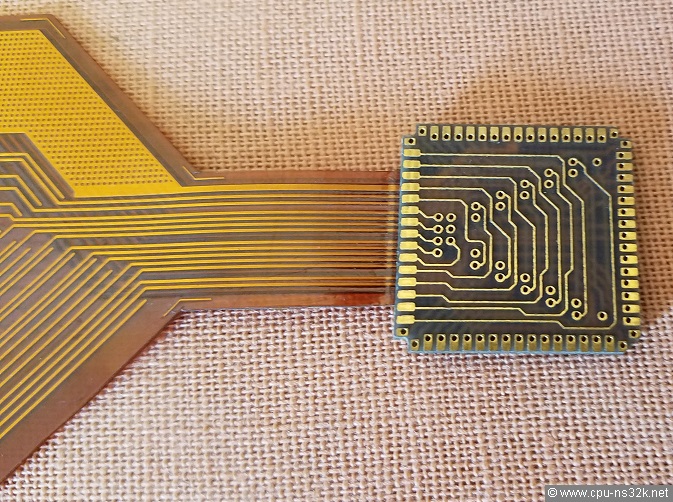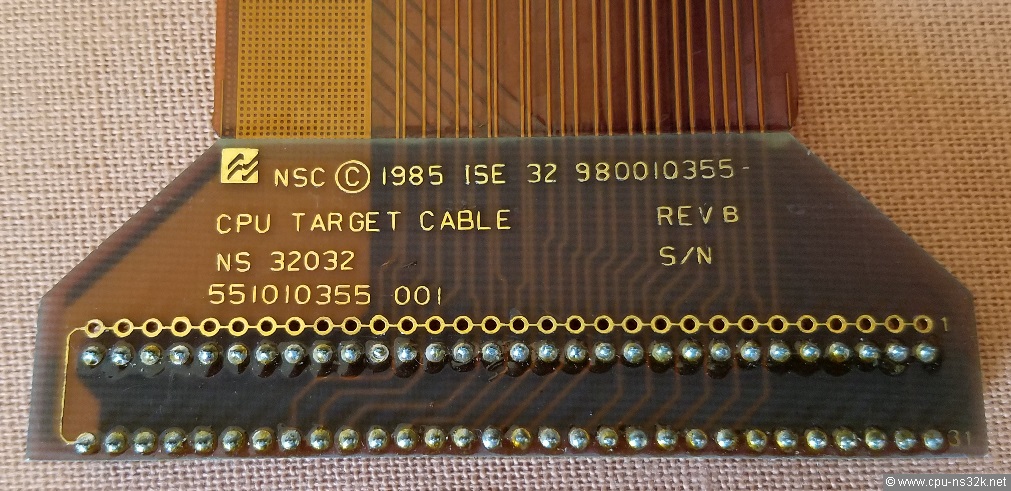ISE Cable
An In-System Emulator (ISE) is used during hardware and software developement mostly in the debugging phase. The idea is to monitor what is happening at the device pins. This can be done in principle also with a logic analyzer. But an ISE is doing more than simple signal tracing. For example it can break program execution on certain events.
National Semiconductor built different In-System Emulators for the different CPUs. The ISE32 was used for the NS32032 CPU and the ISE16 for the NS32016 CPU. The systems were able to emulate not only the CPU but also the NS32082 MMU and the NS32201 TCU.
The photos show the special flat ribbon cable to connect an NS32032 system to the ISE32. Such a cable is very expensive. From an electrical point of view the length of the cable may be critical. Sometimes the system under test has to operate at a lower frequency. The cable shown here was designed in Israel and manufactured in Scotland near Glasgow.

Fig. 1. The In-System Emulator cable for the NS32032 CPU. The length is approximately 30 cm.

Fig. 2. The head of the ISE cable has to be inserted in the system under test instead of the CPU.

Fig. 3. The other end of the ISE cable is connected to the In-System Emulator system.
Thank you to Shay who sent me the photos! He was also the developer of this cable.
Next chapter: Miscellaneous